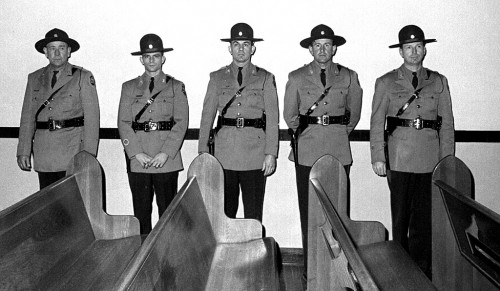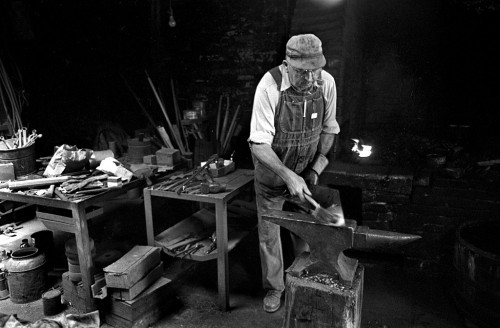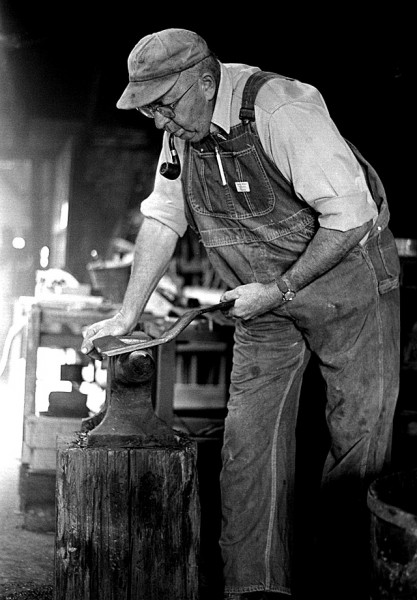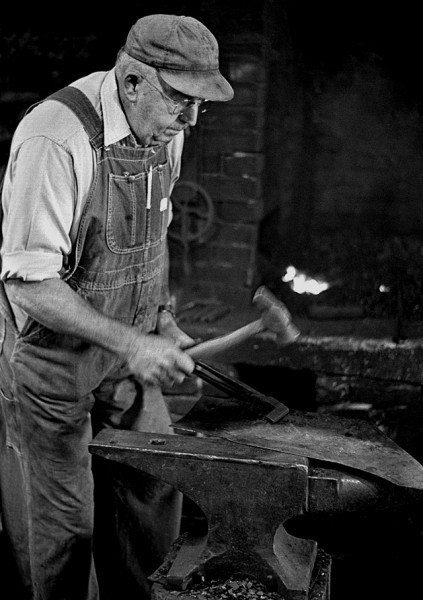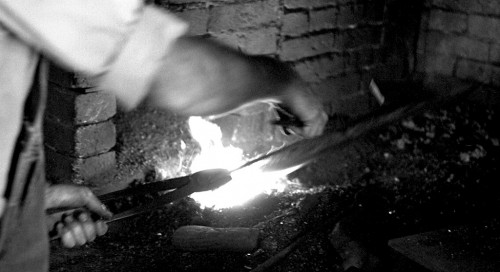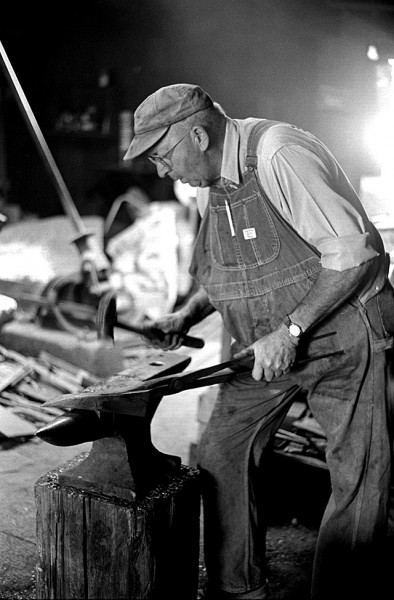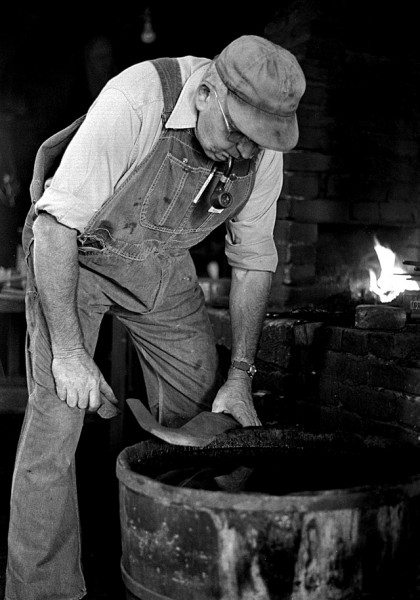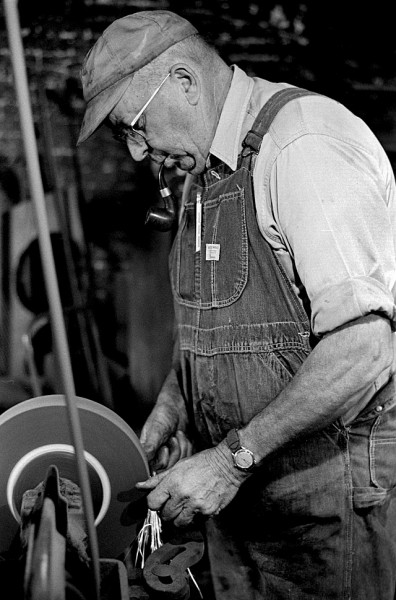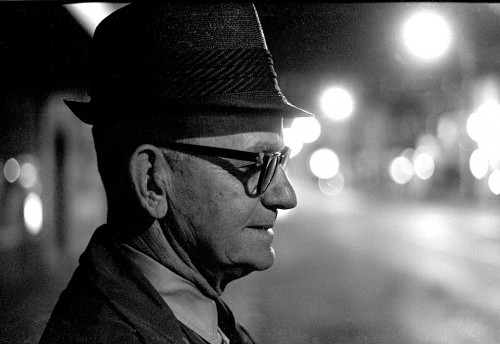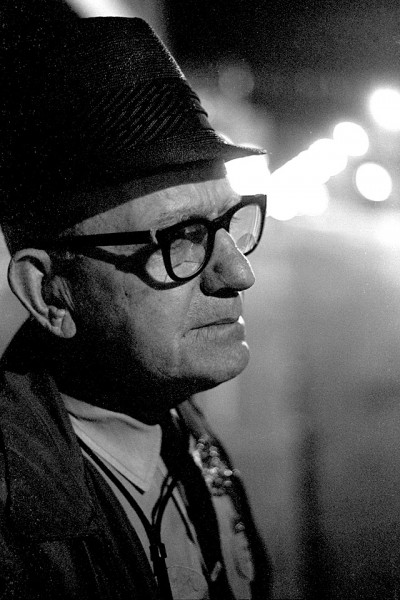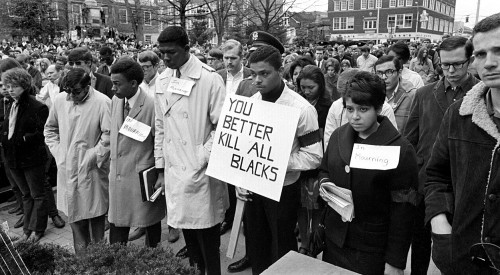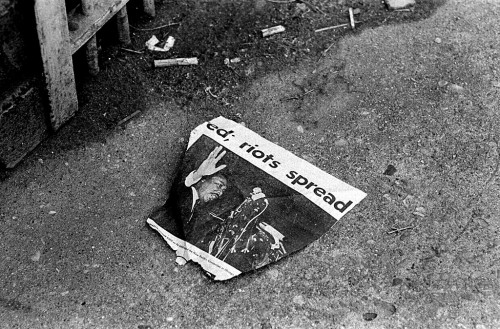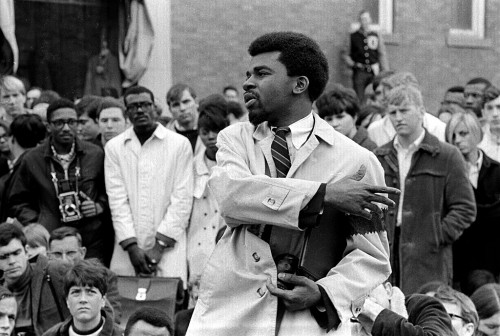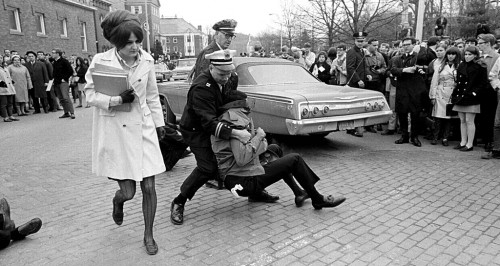I’d rather see these Missouri Highway Patrol troopers here than in my rearview mirror with their red lights spinning. The negative sleeve is dated January 5, 1967, but I didn’t see it in the paper around that date. I thought it might have been taken for the 1967 Achievement Edition and, in fact, there was a story about the Troop E in the February 21 paper. These aren’t the photos that ran with the story, though.
At some time or another, I ran into just about every trooper that worked the counties around Cape, but these guys don’t look familiar. The trooper I knew best was Norman Copeland. He should have been a recruiting poster for what a Highway Patrolman should look like.
How NOT to shoot a photo
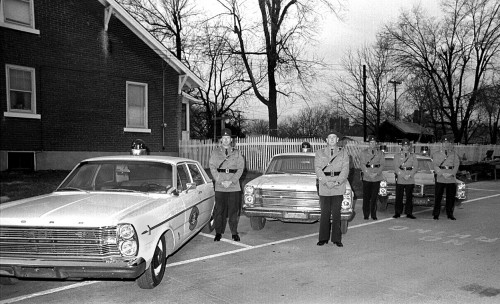 This is not how to shoot a photo of a bunch of people. I violated the newspaper rule of thumb that a person’s head should be at least the size of a nickle in the print. The subjects are way too small.
This is not how to shoot a photo of a bunch of people. I violated the newspaper rule of thumb that a person’s head should be at least the size of a nickle in the print. The subjects are way too small.
My fashion faux pas
I should have remembered that lesson when I moved to Ohio.
The society editor at The Athens Messenger went to a lot of trouble to round up some college girls to model some clothes for a fashion shoot. I don’t like to set up pictures and my idea of fashion is blue jeans and Red Wing boots, so I probably should have handed the assignment off to Bob Rogers, the other photographer. Still, I loaded the gals into my car and we headed off to a state park where we had a great afternoon shooting all kinds of artsy stuff.
The next morning, I dropped off the prints and waited for the praise for a job well done. Marge Straight, the soc editor, looked at them and, in her usual quiet, diplomatic way, said, “Ken these are very nice, but the idea of a fashion shoot is to show the clothes.” Luckily the models were amenable to another day frolicking in the woods.
I used to tell my staff that I’d never ask them to shoot an assignment that I hadn’t shot or wouldn’t be willing to shoot. I lied. I dodged every opportunity to go to New York for the annual fashion shoots.

